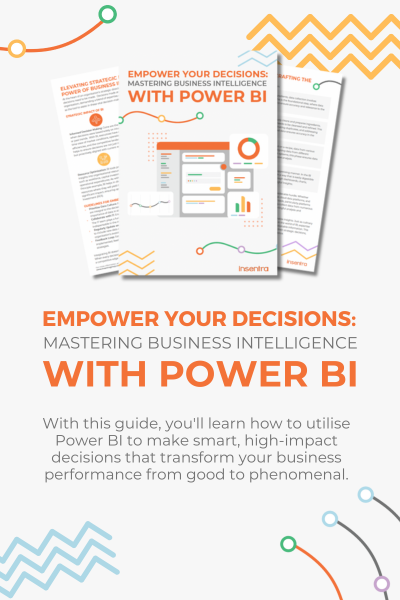Most have heard the terms “on budget”, “over budget” or “under budget” used in project status reporting and in particular for fixed-price projects which have an set budget to deliver an agreed project scope. Project budget is one of the most important critical success factors for a project. A Project Manager (PM) is required to consistently monitor and control project costs throughout the project lifecycle to ensure project is delivered to the approved project budget. This practice is called Project Cost Management.
This article discusses an effective Project Cost Management method called Earned Value Analysis or EVA as a useful method of measuring project cost performance. We will cover EVA concepts, principles and applications in Project Cost Management with a view as to how Insentra applies our Project Cost Management method in our project management methodology.
Concept of EVA
EVA analysis is based on a comprehensive measurement of scope, schedule, and cost. It includes three (3) key elements:
- Planned Value (PV) – The budget expected to perform the work
- Actual Cost (AC) – The actual cost of completing the work
- Earned Value (EV) – The value of the completed work
The use of these three (3) elements can provide a measurement of project variance:
- EV minus AC is Cost Variance (CV). A positive value means there are cost savings because the work completed has a greater value than what has been spent. Conversely, a negative value indicates a cost overrun
- EV minus PV is Schedule Variance (SV). A positive value indicates that work is ahead of schedule because the work completed is greater than what was planned. A negative value indicates that work is behind schedule
The two (2) variance values of CV and SV can be converted into performance indicators which reflect the cost and progress of any work item:
- EV divided by AC provides a Cost Performance Index (CPI). A value above 1 denotes that the project is completing more work than what is being spent
- EV divided by PV gives a Progress Performance Index (SPI). A value of above 1 indicates that the project is progressing at a faster pace than planned
Let’s use an example to examine the concept of EVA further. Suppose the budgeted cost of a project is $50,000 and the project is to be completed in 5 weeks with the budget spread across each week evenly. At the end of week 1 the following values are noted:
- PV = $10,000 (Based on $50,000 budget across 5 weeks)
- AC = $8,000 (Actual work cost to the project)
- EV = $8,000 (The value of work completed)
Calculation of project variance shows and analysis shows:
- CV = EV – AC = $8,000 – $8,000 = $0, indicating this project is currently on budget
- SV = EV – PV = $8,000 – $10,000 = -$2,000, indicating this project is behind schedule as it delivered $2,000 less work in week 1
Calculation of the performance indicators reveals:
- CPI = EV / AC = $8,000 / $8,000 = 1
- SPI = EV / PV = $8,000 / $10,000 = 0.80
Analysis suggests that work on this project is currently on budget, however behind schedule. The project cost is at risk of overrun if the project progresses without corrective action being taken.
Principle of EVA
In Project Cost Management, cost and schedule control are closely related to each other. In the past, these were often managed separately which created a lot of problems. Using the above example, the project’s accumulated actual cost is equal to the planned budget (CPI = 1), however the completed work is less than the planned work due for completion at that point ( SPI < 1). If this trend continued, the project budget would be fully consumed and there would still be scoped work remaining and it would eventually be too late to control the cost of the project and keep the project within budget. This demonstrates that the accumulated actual cost and the planned budget is only half of the picture and cannot reflect a complete project financial status.
In order to truly and effectively control the project budget it is necessary to continuously monitor the project’s Earned Value and Actual Cost whilst simultaneously ensuring these are analysed throughout the project’s life. To be executed effectively, an indicator and a method for comprehensive analysis is required for both cost and schedule.
The principle of using EVA to manage and control project budget is to conduct comparative analysis regularly throughout the project against the baselined cost and schedule. Armed with this analysis, corrective and preventative action can be taken to adjust the corresponding work plan. At Insentra we believe that the key to effective Project Cost Management is to monitor the cost and schedule progress of a project regularly, compare these to the baseline and then take the necessary corrective actions promptly to ensure the project will be delivered within budget.
Application of EVA
Applying EVA into your Project Cost Management is as simple as:
- Build a plan and baseline it to establish a cost baseline (i.e. determine the Planned Value)
The cost baseline is a time-phased budget. By allocating the estimated costs over a time period, the PV for each reporting cycle can be determined
- Record the actual work undertaken and calculate actual cost
Before the end of each reporting cycle, determine the actual cost of each work package to calculate the project AC for current reporting cycle then add this to the AC for previous periods to calculate the accumulated AC
- Calculate Earned Value
Estimate the completion percentage for each work package at the end of the reporting cycle and multiply these percentages by the corresponding work package budget then add these values to ascertain the EV
- Calculate and perform a performance analysis
A cost baseline plan for PV was developed prior to the execution of the work with the AC and EV recorded and calculated during the project delivery. With all three (3) key elements available, an EVA can be produced and reported each reporting cycle
How Insentra applies EVA
Now we have walked through the concept, principle and application of EVA in Project Cost Management, I hope it provides you with value derived from understanding this method and applying it to benefit your project management.
Similar to many other project management methods and methodologies, the goal of adopting a method in project management is not to overburden the PM but to provide tools and an appropriate level of control within an acceptable level of risk. In addition, an organisation’s project management method should form a seamless part of the organisation’s overall governance and management systems.
At Insentra our PMs strive to accurately manage project cost to deliver projects on time and within budget. We apply the concepts and principles of EVA tailored it to suit our unique and proven channel delivery approach and project governance. Insentra takes a phased approach to all fixed price service engagements that follows our project governance methodology. Commencing before the project is even sold, we estimate the project duration based on our in-depth industry and project delivery experience. A detailed Work Breakdown Structure plans the work for each phase so we are able to perform financial analysis on phase and project cost performance during reporting cycles and effectively manage project costs.
How have you tailored Earned Value Analysis to suit your Project Cost Management?











